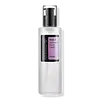What's inside
What's inside
 Key Ingredients
Key Ingredients

 Benefits
Benefits

 Concerns
Concerns

 Ingredients Side-by-side
Ingredients Side-by-side

Water
Skin ConditioningPropanediol
SolventPotassium Hydroxide
BufferingGlycolic Acid
BufferingLactic Acid
BufferingButylene Glycol
Humectant1,2-Hexanediol
Skin ConditioningGlycerin
HumectantPhenoxyethanol
PreservativeDimethyl Sulfone
SolventPolyglyceryl-10 Oleate
Skin ConditioningLactobacillus Ferment
Skin ConditioningHouttuynia Cordata Extract
Skin ConditioningSophora Japonica Flower Extract
Skin ProtectingSaccharomyces/Rice Ferment Filtrate
Skin ConditioningPanthenol
Skin ConditioningAllantoin
Skin ConditioningBackhousia Citriodora Leaf Oil
MaskingSea Water
HumectantBenzyl Glycol
SolventScutellaria Baicalensis Root Extract
AstringentEthylhexylglycerin
Skin ConditioningPentylene Glycol
Skin ConditioningTocopherol
AntioxidantRaspberry Ketone
MaskingWater, Propanediol, Potassium Hydroxide, Glycolic Acid, Lactic Acid, Butylene Glycol, 1,2-Hexanediol, Glycerin, Phenoxyethanol, Dimethyl Sulfone, Polyglyceryl-10 Oleate, Lactobacillus Ferment, Houttuynia Cordata Extract, Sophora Japonica Flower Extract, Saccharomyces/Rice Ferment Filtrate, Panthenol, Allantoin, Backhousia Citriodora Leaf Oil, Sea Water, Benzyl Glycol, Scutellaria Baicalensis Root Extract, Ethylhexylglycerin, Pentylene Glycol, Tocopherol, Raspberry Ketone
 Reviews
Reviews

Ingredients Explained
These ingredients are found in both products.
Ingredients higher up in an ingredient list are typically present in a larger amount.
1,2-Hexanediol is a synthetic liquid and another multi-functional powerhouse.
It is a:
- Humectant, drawing moisture into the skin
- Emollient, helping to soften skin
- Solvent, dispersing and stabilizing formulas
- Preservative booster, enhancing the antimicrobial activity of other preservatives
Butylene Glycol (or BG) is used within cosmetic products for a few different reasons:
Overall, Butylene Glycol is a safe and well-rounded ingredient that works well with other ingredients.
Though this ingredient works well with most skin types, some people with sensitive skin may experience a reaction such as allergic rashes, closed comedones, or itchiness.
Learn more about Butylene GlycolGlycolic Acid is arguably the most famous alpha hydroxy acid (AHA) with tons of research backing its benefits.
It is found naturally in sugar cane but the form used in skincare is usually synthetic for purity and stability.
Glycolic acid removes the top layer of dead skin cells to allow newer and fresher ones to emerge.
AHAs work by breaking down the structural “glue” that holds old skin cells in place. When that buildup is gone, your skin can renew itself more efficiently.
Research also shows glycolic acid stimulates collagen production, helping to firm and thicken the skin over time. This is one of its biggest advantages over other AHAs.
Overall, glycolic acid helps with:
Fun fact: Glycolic acid boosts skin hydration by helping it produce molecules that increase hyaluronic acid naturally.
To work best, glycolic acid products should have a pH between 3-4 (that’s where exfoliation is most effective but still gentle on skin).
The pH and concentration of a product are key to its effectiveness:
It is normal to feel a slight stinging sensation when using glycolic acid. This usually fades as your skin adjusts.
Because glycolic acid has the smallest molecular size in the AHA family, it can penetrate deeper, which enhances its effectiveness but also makes it more likely to irritate sensitive skin.
If your skin is very sensitive or prone to rosacea, glycolic acid may be too strong; in that case, try milder options like lactic acid or a PHA instead.
Recent studies suggest glycolic acid might even help protect against UV damage. But don’t skip sunscreen! Freshly exfoliated skin is more sensitive to the sun.
Glycolic acid is a skincare superstar. It smooths, brightens, hydrates, and firms the skin. Unless you’re highly sensitive, it’s well worth adding to your routine.
Read more about some other popular AHA's here:
Learn more about Glycolic AcidPanthenol is a common ingredient that helps hydrate and soothe the skin. It is found naturally in our skin and hair.
There are two forms of panthenol: D and L.
D-panthenol is also known as dexpanthenol. Most cosmetics use dexpanthenol or a mixture of D and L-panthenol.
Panthenol is famous due to its ability to go deeper into the skin's layers. Using this ingredient has numerous pros (and no cons):
Like hyaluronic acid, panthenol is a humectant. Humectants are able to bind and hold large amounts of water to keep skin hydrated.
This ingredient works well for wound healing. It works by increasing tissue in the wound and helps close open wounds.
Once oxidized, panthenol converts to pantothenic acid. Panthothenic acid is found in all living cells.
This ingredient is also referred to as pro-vitamin B5.
Learn more about Panthenol